Background

In this challenge, you'll have to use CyberChef and RapidTables to solve it. (If you don't know what is CyberChef and RapidTables, it basically helps you to decode, decrypt, encode and encrypt things.)
Question 1
Let's look at the first question.
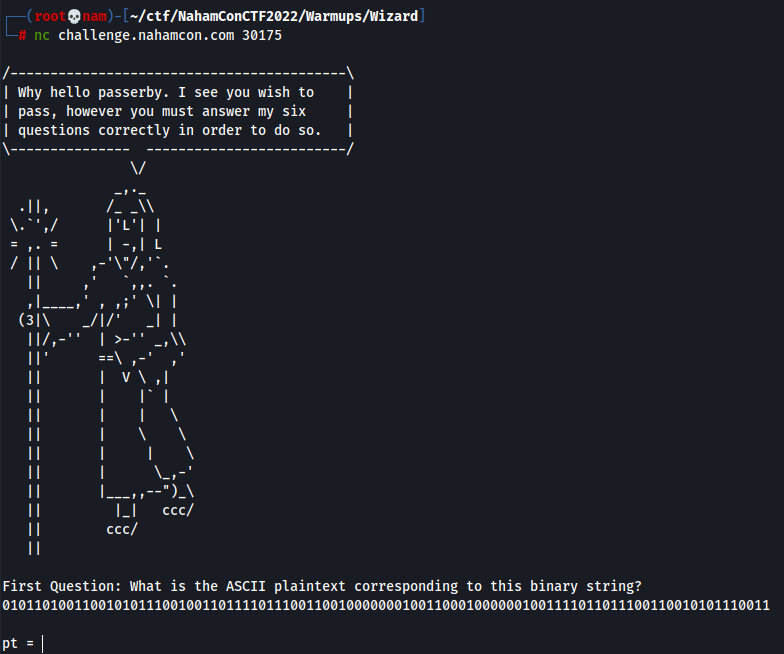
First Question: What is the ASCII plaintext corresponding to this binary string?
010110100110010101110010011011110111001100100000001001100010000001001111011011100110010101110011
It's said it's a binary string, so why not put that string to CyberChef? copy that string paste it in the Input textbox, then search binary at Opeartions tab, and choose From Binary.
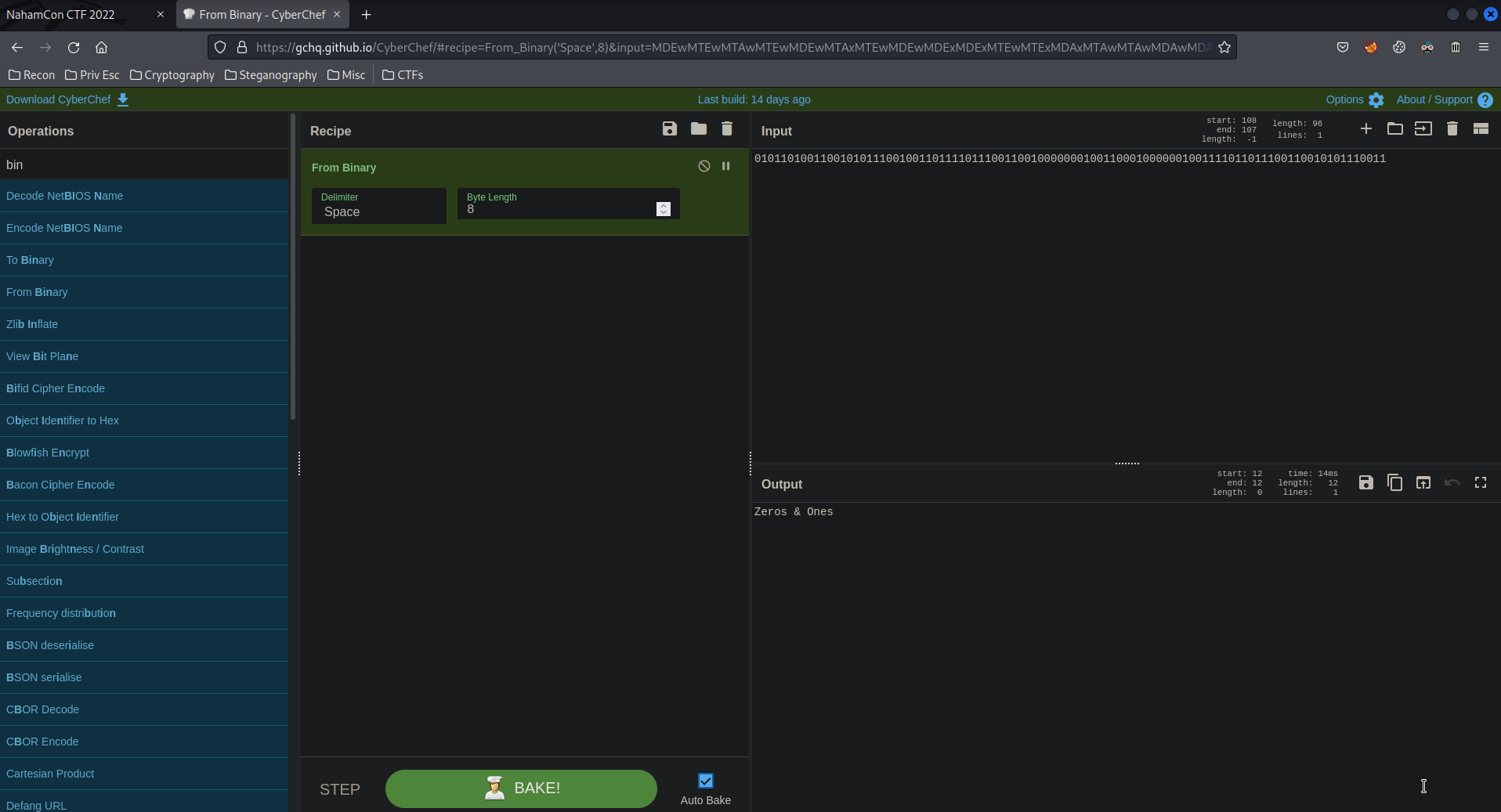
As you can see in the output, it outputs out Zeros & Ones, and this is the answer for the first question!
Question 2

Second Question: What is the ASCII plaintext corresponding to this hex string?
4f6820776f77777721204261736520313020697320636f6f6c20616e6420616c6c2062757420486578787878
It's said it's a hex string, so copy and paste this string like last question.
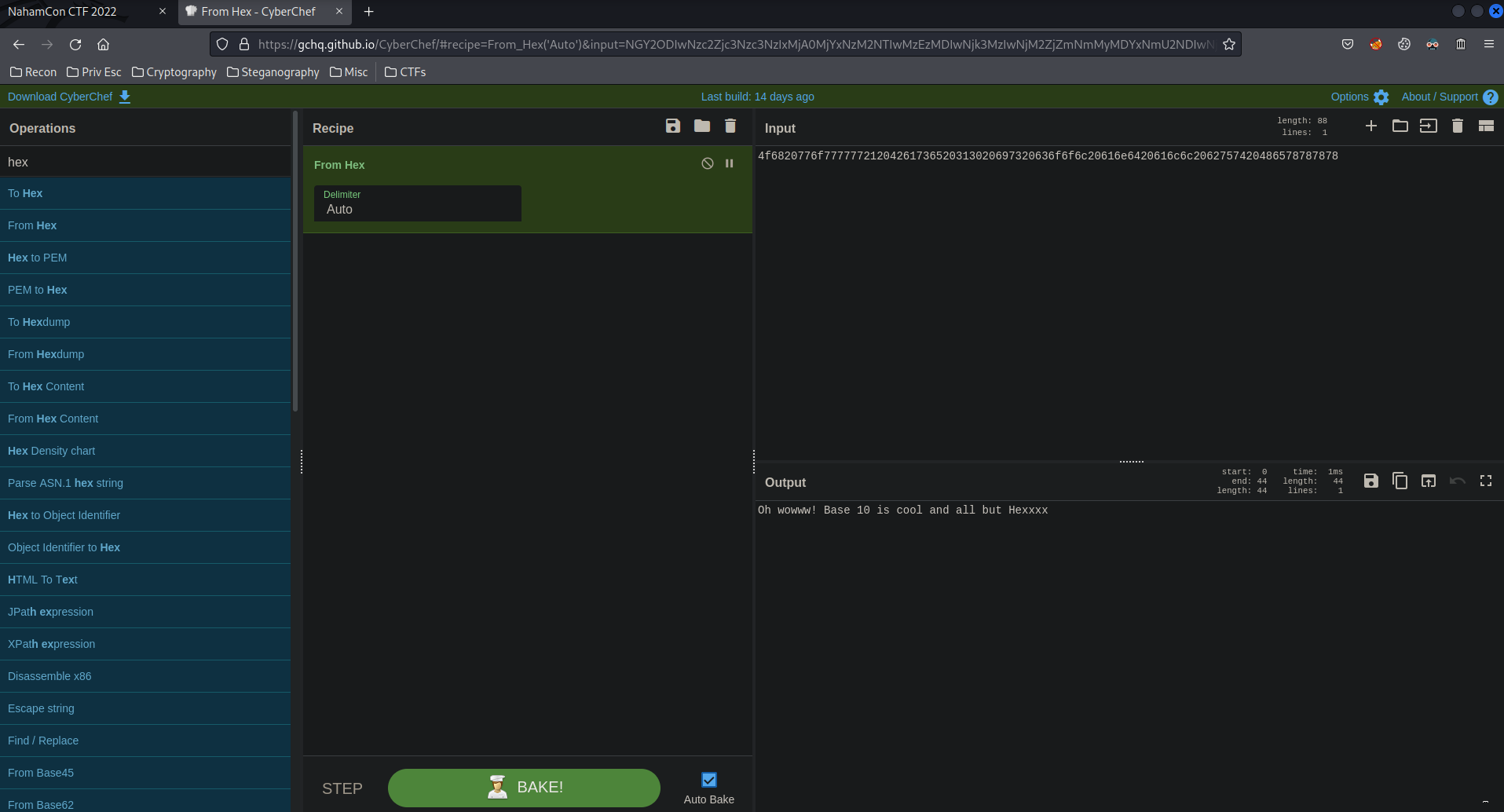 And it outputs out
And it outputs out Oh wowww! Base 10 is cool and all but Hexxxx.
Question 3

Third Question: What is the ASCII plaintext corresponding to this octal string?
(HINT: octal -> int -> hex -> chars)
535451006154133420162312701623127154533472040334725553046256234620151334201413347444030460563312201673122016730267164
This question really makes so frustrating because I trusted CyberChef too much Lol.
In this question, it's said we've to find the ASCII plaintext from that octal string, and that octal string is encoded from ASCII plaintext -> hexadecimal -> integer(decimal) -> octal, so we need to decode that octal string to octal -> integer(decimal) -> hexadecimal -> ASCII plaintext. (I've tried using CyberChef to convert octal to integer, but it doesn't work.)
Then I started using RapidTables. Copy and paste the octal string, and it outputs out 3131880780077943822552217163958175390677077601044656010262087478932193255537275603789701176597829315030644
in the Decimal number textbox
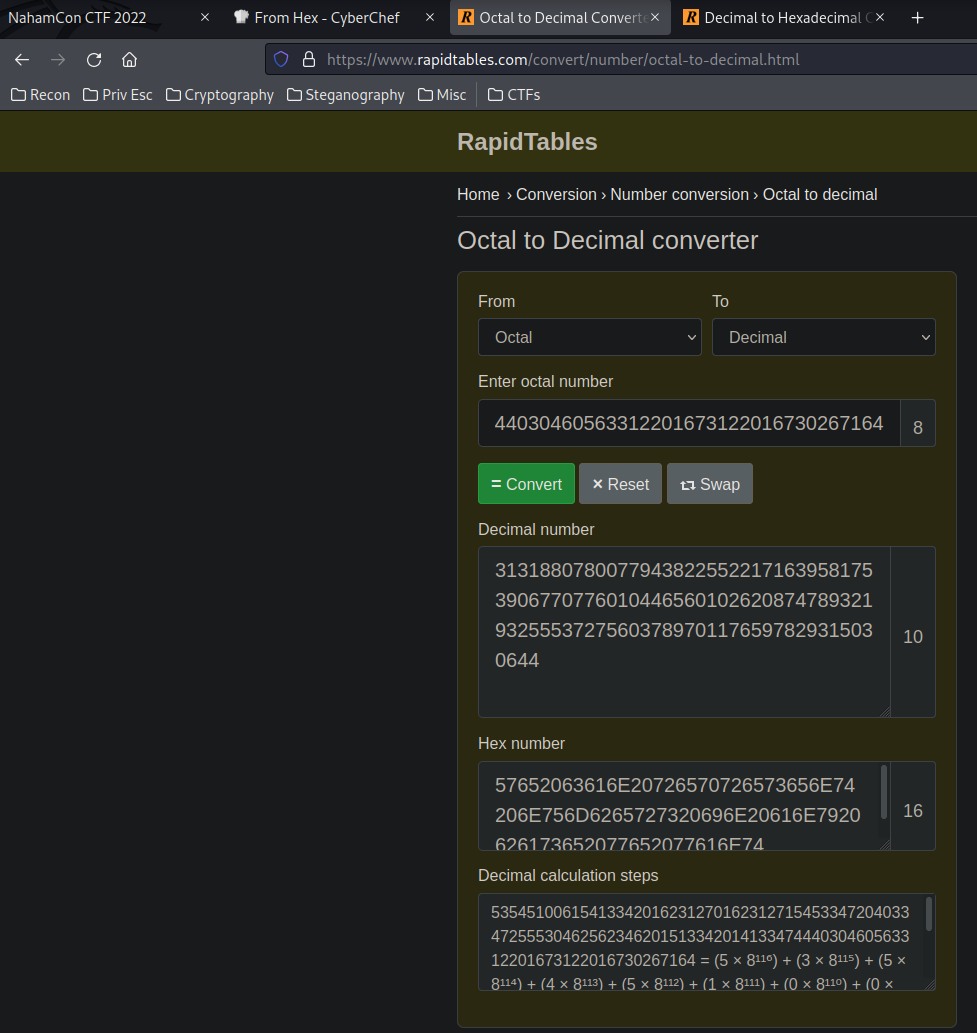
Next, we need to convert this 3131880780077943822552217163958175390677077601044656010262087478932193255537275603789701176597829315030644 integer to hexadecimal. In order to do that, we can use RapidTables. (CyberChef doesn't work, I tried)
Now, it should outputs out this hexadecimal 57652063616E20726570726573656E74206E756D6265727320696E20616E7920626173652077652077616E74.
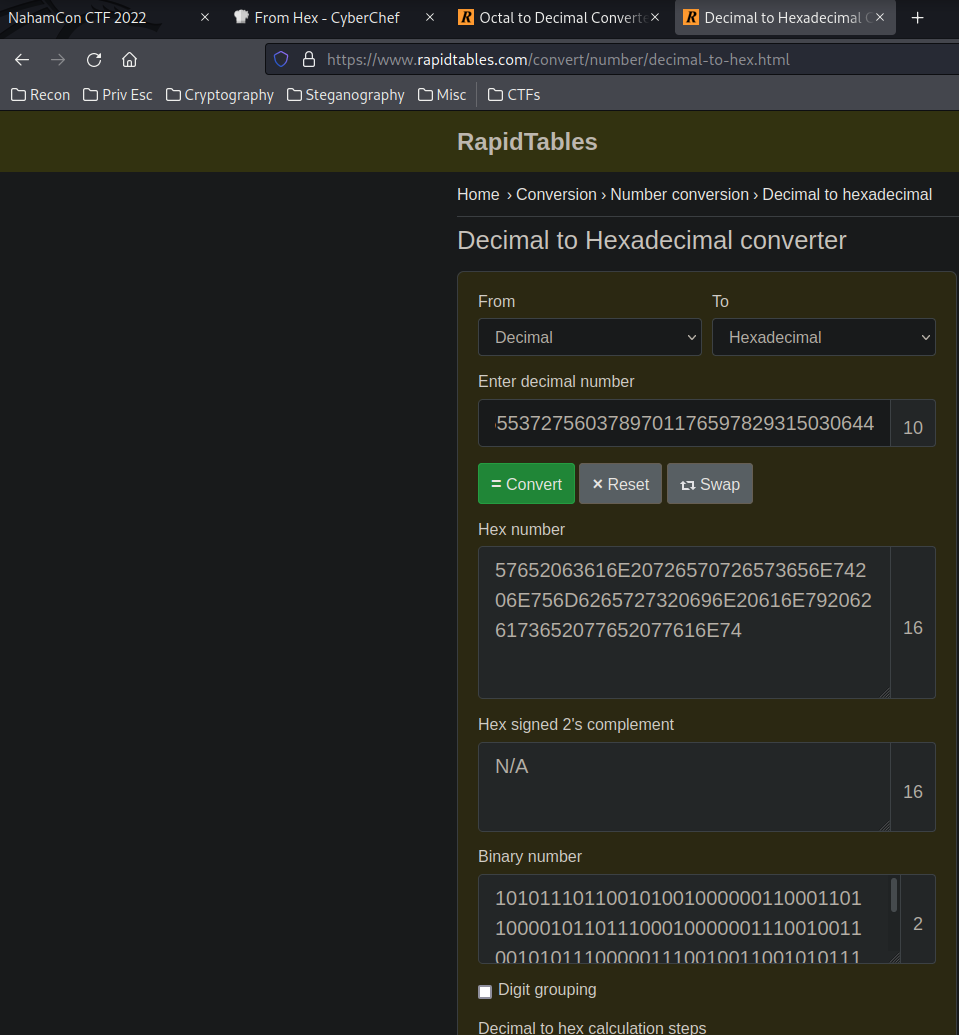
Then, you can simply copy and paste that hexadecimal to CyberChef and start baking with the From Charcode recipe. (Charcode means ASCII plaintext)
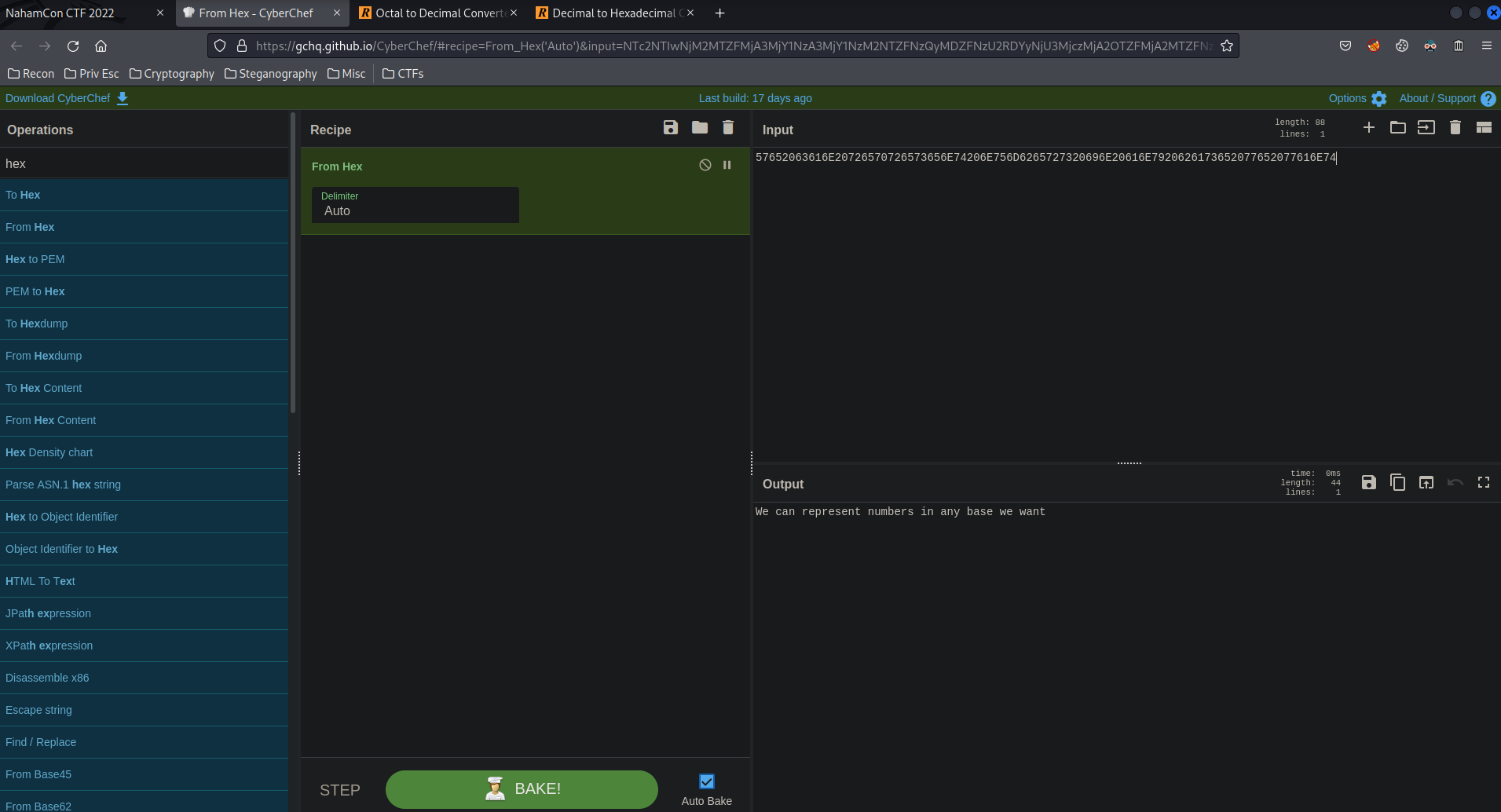
And the answer is We can represent numbers in any base we want!!
Question 4

Fourth Question: What is the ACII representation of this integer?
(HINT: int -> hex -> chars)
8889185069805239596091046045687553579520816794635237831028832039457
Again, using the previous technique to decode!
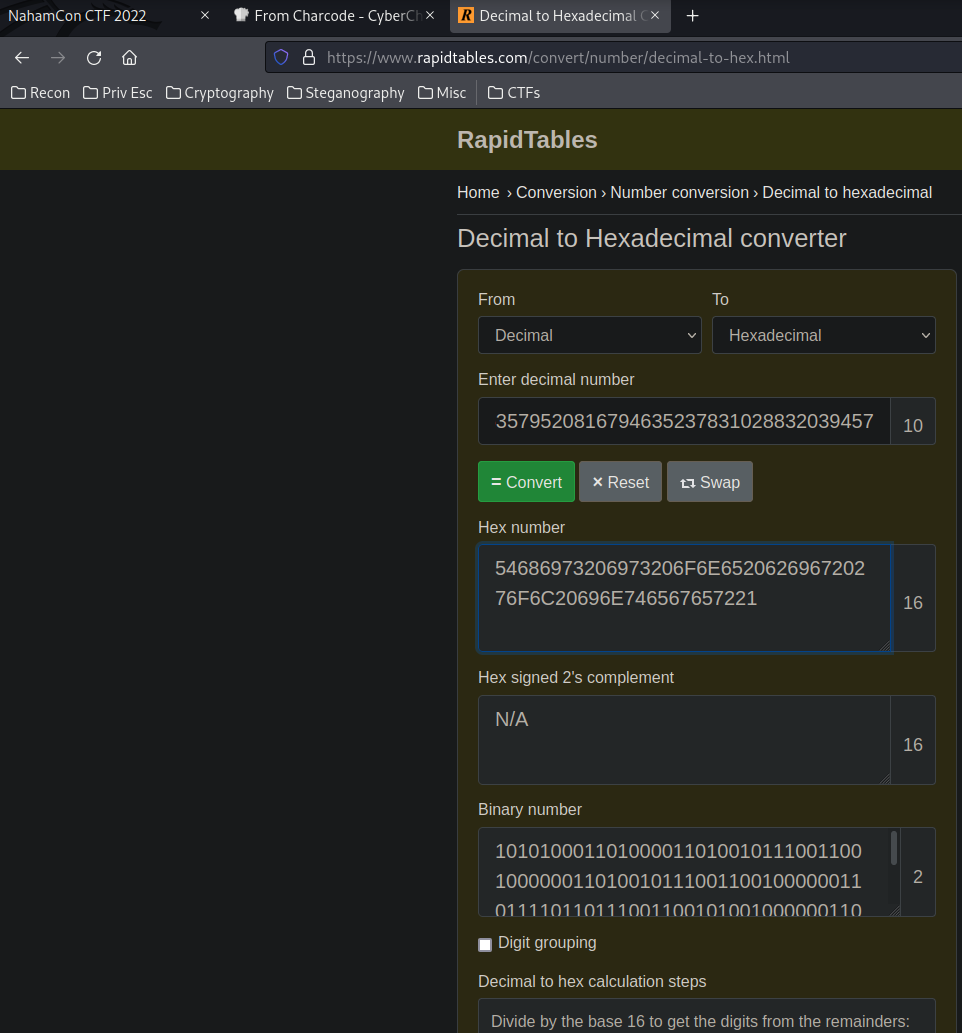
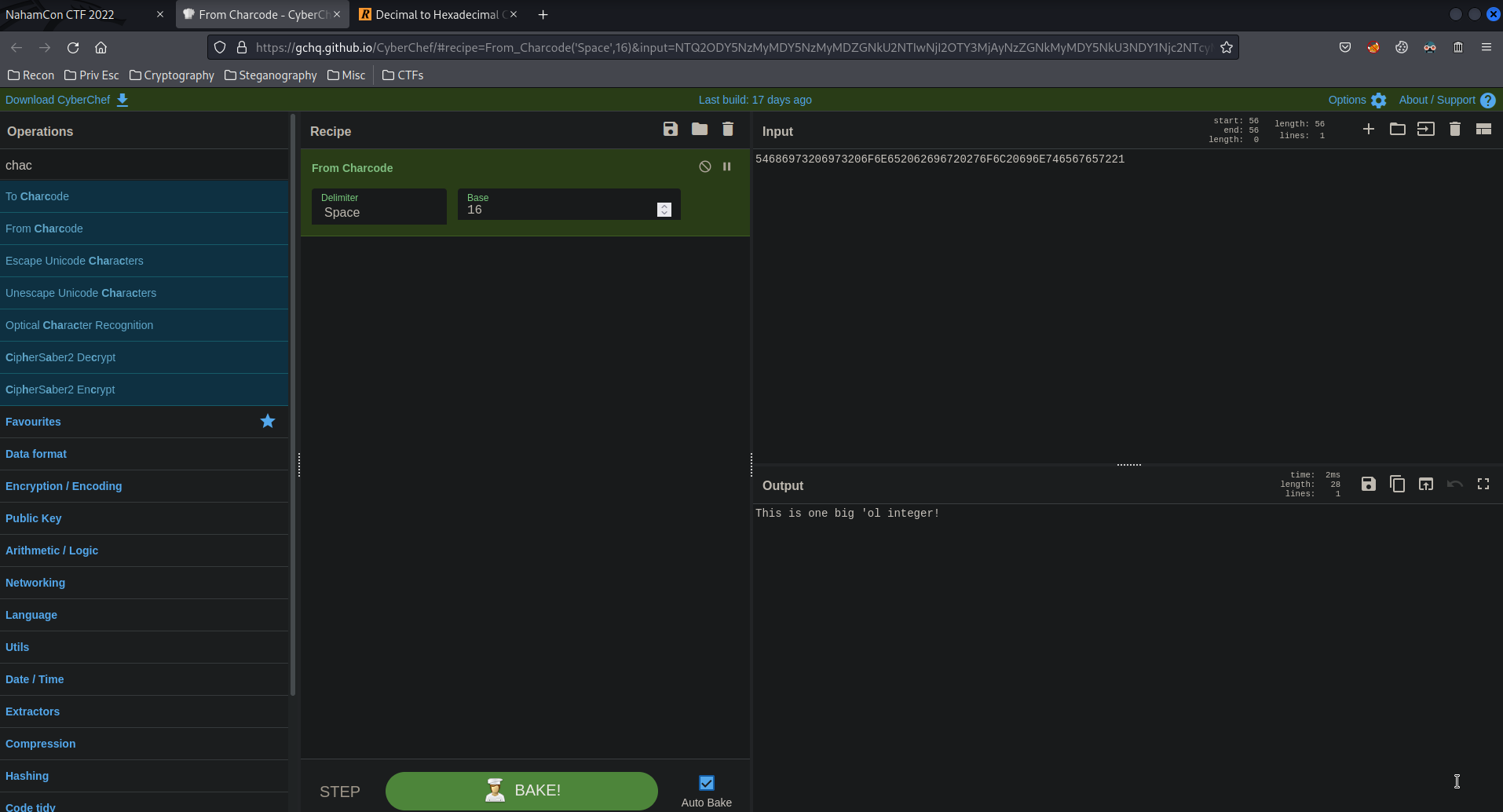
Answer: This is one big 'ol integer!
Question 5

Fifth Question: What is the ASCII plaintext of this Base64 string?
QmFzZXMgb24gYmFzZXMgb24gYmFzZXMgb24gYmFzZXMgOik=
It's said it's a Base64 encoded string, let's use CyberChef to decode that!
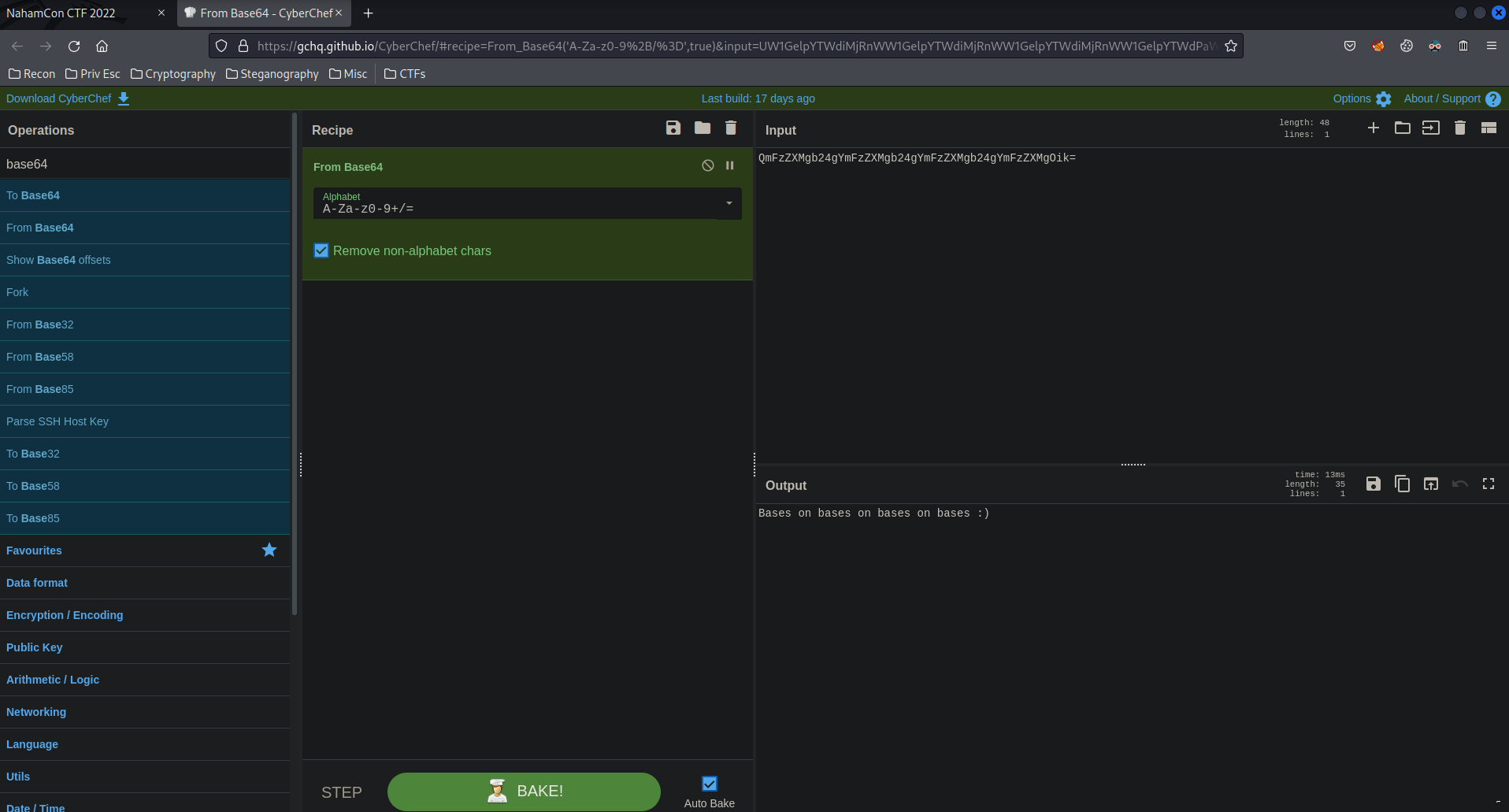
Answer: Bases on bases on bases on bases :)
Bonus tips!
What if no one tells you that string is Base64 encoded? How would you determine that string using what encoding method?
There's a quick way to determine that string.
If you saw there's a = or == in that string, that must be Base64, because that = or == is called padding in Base64! Base64 requires the length of an output-encoded string must be a multiple of three. So, next time if you see = or == in an encoded string, it must be Base64!
Bonus Challenge: What is the ASCII plaintext of this encoded string?
QmFzZTY0X0hhc19BX1BhZGRpbmchCg==
Question 6

Last Question: What is the Big-Endian representation of this Little-Endian hex string?
293a2065636e657265666669642065687420776f6e6b206f7420646f6f672073277449
It's said it's a Little-Endian hexadecimal! So let's convert that string to ASCII plaintext by using CyberChef!
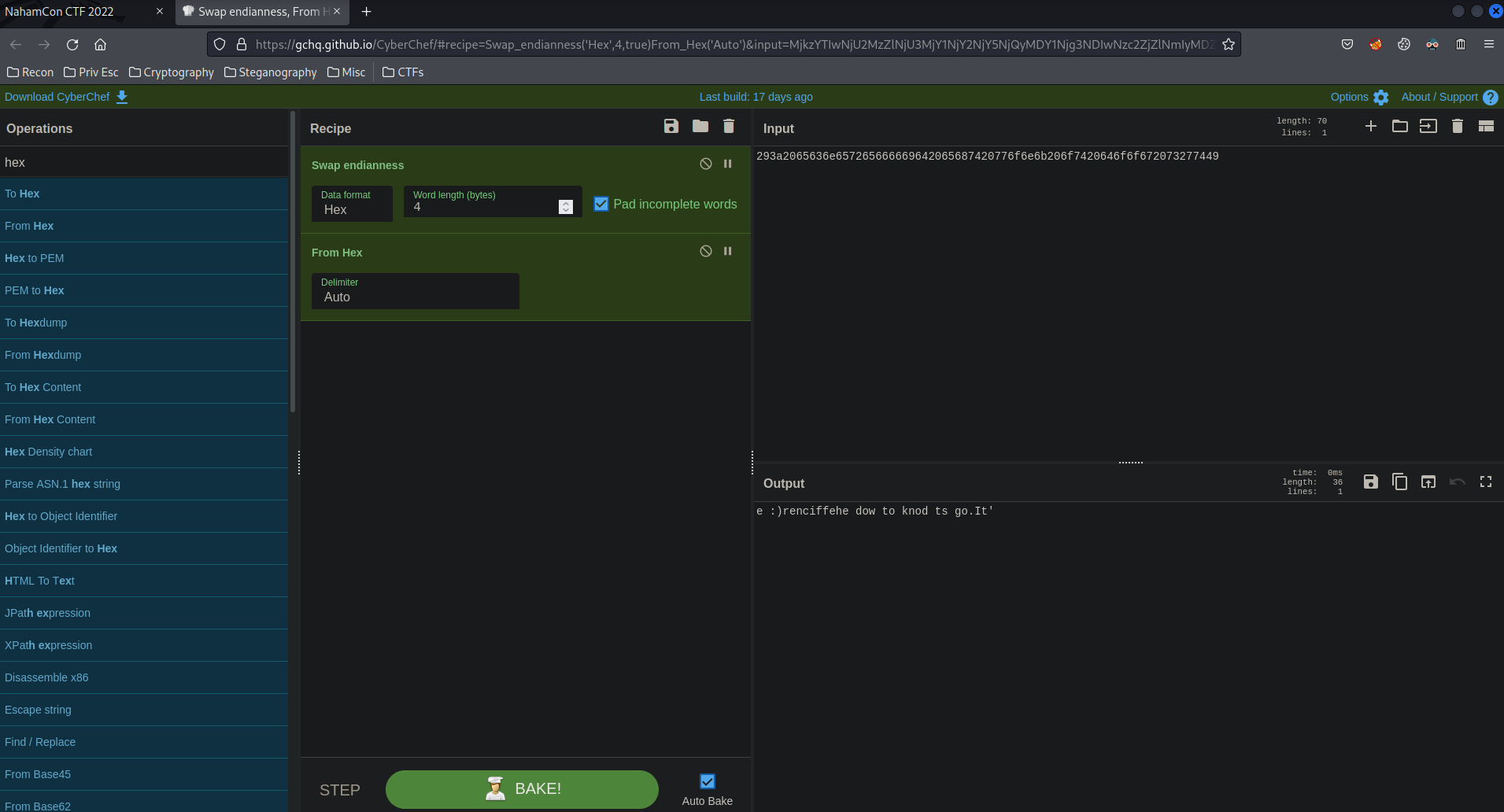
Hmm… Looks like it's a ASCII plaintext, but a little bit weird. Oh!!! We can change the Word length in the Swap endianness recipe!
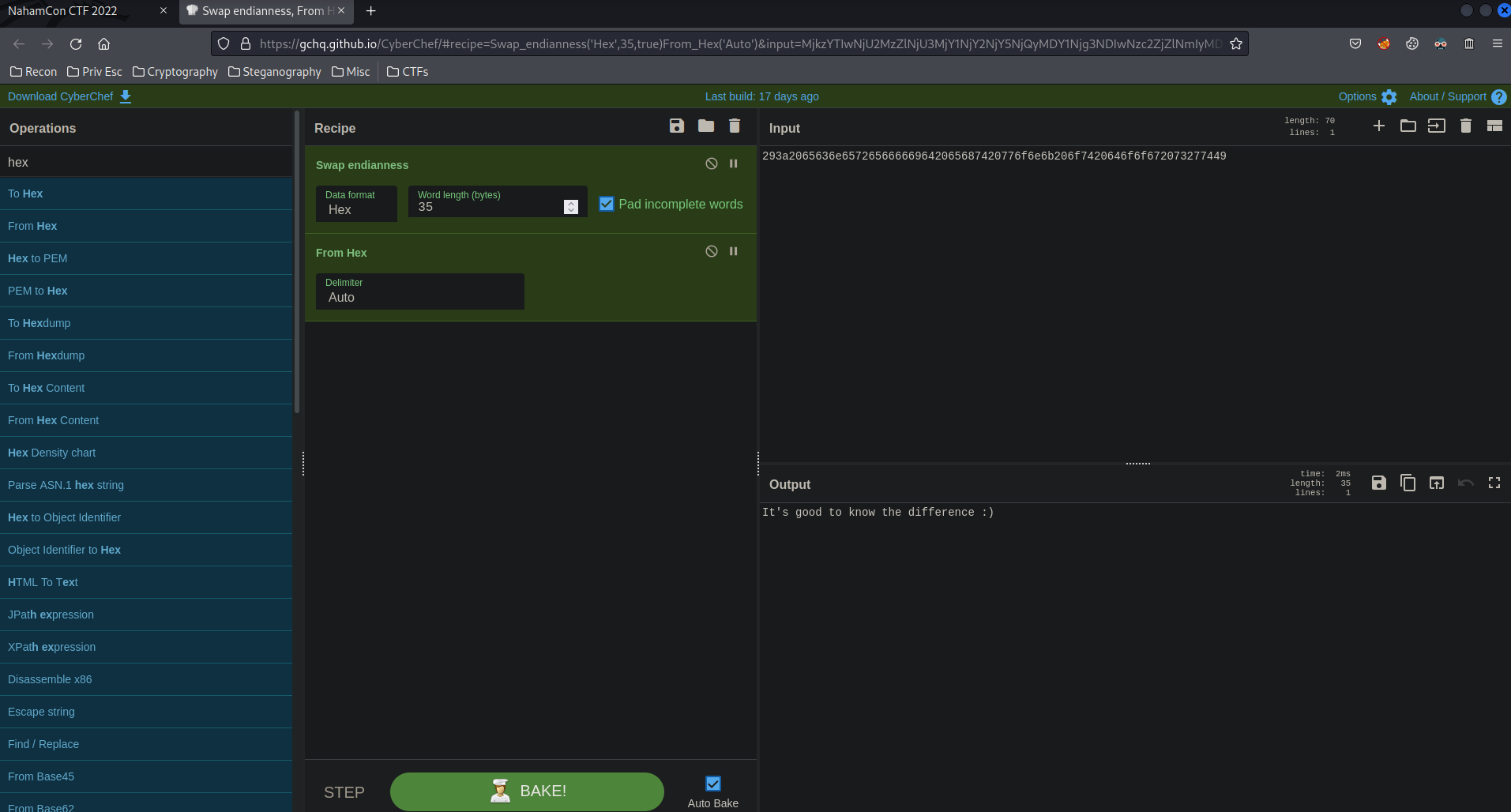
Yes! We've successfully solve the last question! It's good to know the difference :)

Now we finally have the flag!!